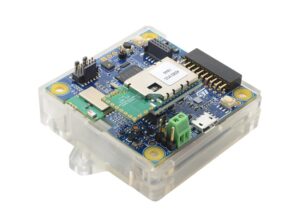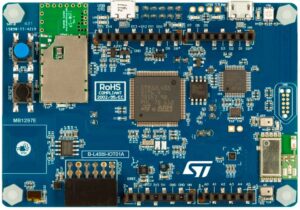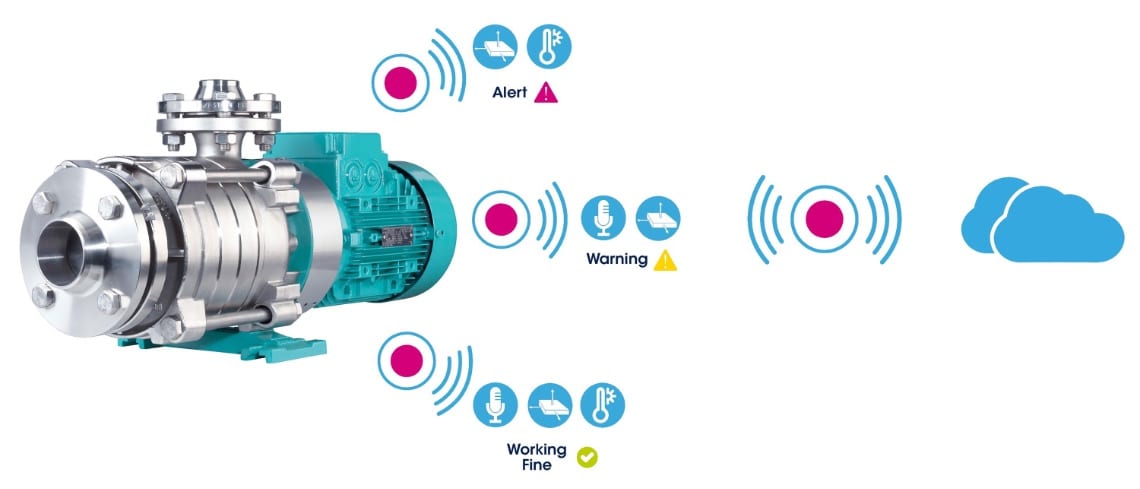Condition monitoring: To improve the accessibility of our content, please find the audio version of this blog post.
ST recently introduced a slew of new hardware and software solutions that make condition monitoring and predictive maintenance more accessible. On October 9, 2020, Manuel Cantone, from ST, will present some of them during a keynote at AWS Manufacturing and Industrial IoT Web Day. His talk will share some of these tools while focusing on ST’s new approach. For instance, we just announced the X-CUBE-AWS 2.0. The software expansion package contains a qualified port of Amazon FreeRTOS for the new B-L4S5I-IOT01A Discovery kit. The ST ecosystem also includes gateways, such as the STM32MP157C-DK2 or the STEVAL-STWINKT1. Both can use the STEVAL-STWINWFV1 Wi-Fi expansion board to connect to the Internet.
Condition monitoring and predictive maintenance applications must quickly go from concepts to practical applications. Companies are requiring increasingly faster time to market. As a result, we are now offering “solution evaluation kits,” such as the SL-PREDMNT-E2C and the SL-PREDMNT-S2C. Both make an engineer’s workflow simpler by grouping all hardware and software resources under one webpage. The time between an idea and the first demo is thus much shorter. Teams can send data to the AWS dashboard faster while avoiding incompatibilities or other issues that can plague a project.
Condition Monitoring and Predictive Maintenance: A Solution-Based Approach
The SL-PREDMNT-S2C and Its STEVAL-STWINKT1

The SL-PREDMNT-S2C “Sensor to Cloud” solution kit rests on the STEVAL-STWINKT1. The platform works as a sensor board and gateway (when used with a Wi-Fi card) and fits industrial settings. It precisely monitors equipment operations thanks to its vibration sensor (IIS3DWB). There’s also a iNEMO inertial module with Machine Learning Core (ISM330DHCX) and a motion detector (IIS2DH). We also find a magnetometer (IIS2MDC), a thermometer (STTS751), and a barometer (LPS22HH). Finally, we placed two MEMS microphones (the digital industrial-grade IMP34DT05 and the analog ultrasonic MP23ABS1).
Its small size, plastic housing, and 480 mAh lithium polymer battery mean it is easy to use. In the field, the STEVAL-STWINKT1 can collect data, run condition monitoring, or test predictive maintenance. Moreover, it works with FP-IND-PREDMNT1, which helps capture sensor data. Developers can then visualize the information on the DSH-PREDMNT cloud dashboard. Finally, the new sensor board passed the AWS Device Qualification program for FreeRTOS and it is already available in the AWS Device Catalog.
The SL-PREDMNT-E2C and Its STM32MP1
The other solution is the SL-PREDMNT-E2C “Edge to Cloud”. Our readers know it well since it combines the various hardware elements that ST introduced last year at Re:Invent. One of its major differentiating factors compared to the SL-PREDMNT-S2C is its Linux gateway. The STM32MP157C-DK2 uses X-LINUX-PREDMNT to implement AWS IoT Greengrass. It also helps developers more quickly benefit from its features. For instance, they can simulate a cloud platform in the event of an Internet outage. The software expansion runs on the Cortex-A7 of the STM32MP1. Through WireST-SDK and EdgeST-SDK, developers can implement edge processing between wire-connected sensor nodes and cloud services. It’s as straightforward as registering the sensors on a dashboard, configuring the gateway, and connecting to the cloud service provider.
Condition Monitoring and Predictive Maintenance: A Purpose-Driven Strategy
Multi-Account Registration

Manuel’s talk at the AWS Manufacturing and Industrial IoT Web Day will also present new features. One of them will be Multi-Account Registration. Traditionally, small teams will provision devices one by one. Since there is only a handful of them, adding credentials and manually setting up systems is relatively straightforward. On the other hand, companies dealing with tens of thousands of devices will use AWS Just-In-Time registration to streamline the process. However, if engineers are in between these two situations, Multi-Account Registration makes things vastly more practical.
The feature relies on our STSAFE-A110 secure element to store pre-provisioned credentials. Users simply upload the device certificate from the board to AWS for immediate and secure device registration. There’s no need to handle or install private keys and certificates on thousands of platforms. It thus alleviates the cumbersome installs of a myriad of machines. Additionally, the private key stays protected inside the STSAFE-A110, thus increasing security.
Using the STSAFE-A110 Secure Element
The easiest way for developers to take advantage of this feature is to use our new B-L4S5I-IOT01A Discovery kit IoT node. Indeed, it is a one-stop-shop that houses an STM32L4+ and a STSAFE-A110. Alternatively, the STEVAL-STWINKT1 has a footprint for the component while the upcoming STEVAL-STWINKT1B will include the STSAFE-A110 out of the box. Hence, teams have multiple avenues that can vastly optimize their path to provisioning. As a result, instead of manually setting up thousands of devices, it is possible to simply use an ST board. Designers may also come up with a custom design that will take advantage of our Multi-Account Registration.
Next Steps
- Check out the STEVAL-STWINKT1
- Discover SL-PREDMNT-E2C
- Explore SL-PREDMNT-S2C
- Learn more about the B-L4S5I-IOT01A
- Download X-CUBE-AWS, FP-IND-PREDMNT1, DSH-PREDMNT, and X-LINUX-PREDMNT
